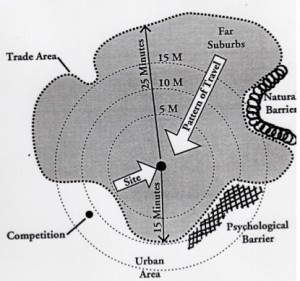The feasibility study is one of the most misunderstood aspects of developing a location-based entertainment facility. Yet, it is the most important step as it lays the foundation for everything that follows. Mistakes at this earliest stage of development will permanently handicap a project’s performance, perhaps fatally.
A good feasibility study is more than just a set of financial projections. As much as answering the question, Is a project feasible?, a good feasibility study addresses the question of what is most feasible. This includes what niche market of customers should be targeted; what should the mix of attractions, food and beverage and other elements be; what size should the project be and what should all the project’s attributes be to attract the targeted market and assure maximum success. Done properly, the feasibility study becomes the market-driven strategic plan for the project’s entire development and operation.
Preparing a feasibility study entails both art and science. Its takes someone very experienced in the location-based entertainment center industry to analyze all the information and data (the science) and make the necessary interpretations and judgment calls of what it all means (the art).
Feasibility starts with market analysis and market feasibility. The market area needs to be defined. There is no such thing as standard criteria for defining a market area. Market areas are not circles defined by some fixed distance. Market areas vary greatly in both distance and drivetime from the site based upon multiple factors unique to each site. A market area might reach 20 minutes and 15 miles in one direction, but only 10 minutes and 5 miles in another direction. Define the market area wrong and all the demographic and socioeconomic data used will be wrong.
Once the market areas are defined, the demographic and socioeconomic data and any identified competition must be evaluated and interpreted to determine market feasibility. This includes which niche market of customers should be targeted, including definition by age, social groupings and socioeconomic-lifestyles; the type of center that is most feasible and its mix.
The feasibility study then projects attendance based on the market area data and competition and right-sizes the center, including all its components. This is then translated into a preliminary site and floor plan to assure that the center will fit on the site or in the leased space and for purposes of accurately estimating project development costs
The financial pro forma projections follow. First revenues are determined by calculations of attendance multiplied by assumptions for projected per capita expenditures for each category of revenue and type of guest. Operating expenses are then projected to arrive at EBITDA and cash flows. Again, the financial projections are part art based on developing assumptions based on interpretation of all the available information.
Despite what some websites, such as www.familyentertainmentcenter.com, and vendors peddling low cost business software claim, there are no boilerplate spreadsheets where you can just plug in some data and get reliable market feasibility, cost estimates and financial projections. Such fixed formula type solutions ignore the art of feasibility, as no two sites, market areas or projects are the same. Inexperienced entrepreneurs who think such websites or software are a quick and inexpensive route to feasibility are only asking for failure. A reliable feasibility study can only be prepared by an experienced professional, by someone who, based on years of experience, understands how to correctly interpret all the information and data that combine science with the art that goes into preparing feasibility studies.




